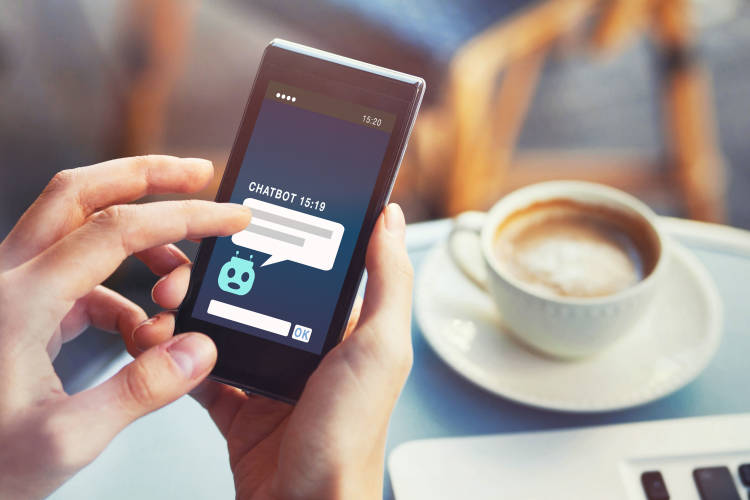Chatbots and messenger bots have evolved to become key components of an organization's customer service strategy. Gartner predicts that by 2027, chatbots will be the primary customer service channel for organizations.
Most organizations use bots to reduce customer support time, recommend products, track deliveries, and more. Thanks to messaging apps such as Facebook Messenger, Kik, and LINE, brands have more opportunities than ever to use good messenger bots and reach customers at scale.
In this blog, we dive deeper into how leading brands leverage conversational AI and bots to improve customer satisfaction.
How do companies use chatbots to improve their customer strategy?
While businesses may not have the human power to respond to the mass influx of messages from customers, they can use conversational AI and bots to register requests, answer frequently asked questions, and send automated replies. Chatbots have the profound potential to open doors for new content marketing opportunities since they provide a way for brands to offer personalized experiences and deliver customized content to their audiences.
Here are the top five ways how businesses use chatbots on social and live chat to:
1. Offer support via familiar channels
Using messenger bots on channels such as Facebook, Whatsapp, and X, formerly Twitter makes a brand more accessible to a wider set of audience, especially Gen Z. Typically these customers experience a high degree of friction when they use a conventional support channel.
2. Resource optimization
Research suggests that chatbots can answer 80% of standard questions. The 24*7 availability of bots saves time and money for the organization and allows them to direct their agents to more critical problems than handling trivial requests.
3. Personalized engagement
96% of customers will leave their existing brands due to poor customer experience. AI-powered bots can address this concern efficiently. Companies use messenger bots to reply to customers in real-time. Bots can hyper-personalize the experience by identifying customer needs.
4. Improve sales
Chatbots use AI algorithms to identify cross-selling and up-selling opportunities. For example, when a customer inquires about a product or service, the bots can identify and categorize the customer as a warm lead.
5. Capture customer data
Brands can leverage messenger bots to collect customer feedback and inculcate the voice of the customer in their future product roadmap.
Top 4 chatbots used by companies for customer care in 2023
Here are the top four messenger bots that have helped companies up their customer service strategy:
1. Facebook chatbot
A Facebook messenger chatbot is an Artificial Intelligence (AI) driven bot that can respond instantaneously to customer queries sent to businesses via direct message. The main aim of this messenger bot is to help the users with the necessary support in real-time using different forms of content such as text, images, videos, and their combination.

Source: Facebook
A Facebook chatbot needs to be programmed according to business needs to understand specific questions, and assist customers accordingly. The bot assists over 1.3 billion people on messenger, helping businesses to acquire customers, enable transactions, drive awareness, and more.
2. LinkedIn chatbot
LinkedIn is an extremely important tool catering to the B2B market. Over 80% of leads are generated from LinkedIn. Therefore, it offers capabilities to automate LinkedIn marketing.
Business users can leverage LinkedIn conversation ads which use conversational AI for real-time engagement. These ads are delivered through LinkedIn messenger. Conversational ads allow businesses to make the lead conversion process efficient. Brands also ensure targeted marketing via such ads and can add relevant CTA to them.

Source: Komarketing
3. Instagram chatbot
Instagram messenger bot for business is a conversion bot embedded into Instagram to automate the following use cases:
Customer replies
Order Placement
Order Status
Leads generation
Giving discounts
Every two out of three customers say that Instagram helps them connect with their favorite brands. It allows organizations to build chat flows using three elements:
Triggers: to launch the chatbot
Actions: to tell the messenger bot what to do
Nodes: to facilitate condition-specific action — based on if-then logic
4. WhatsApp chatbot
Like the above-discussed messenger bots, Whatsapp also allows businesses to engage with their customers and work as a conversion point. However, a noteworthy aspect here is that Whatsapp ensures that brands interact with their consumers without spamming other users. It offers a 24-hour window for user-initiated conversations and offers pre-designed templates for brands to interact with customers otherwise.

Source: WhatsApp
7 examples of how top brands are using chatbots on messenger apps
Here are the top seven brands which have revolutionized their customer service strategy with messenger bots and why they’re so awesome.
1. 1-800-FLOWERS
On Facebook Messenger, you can now go from chatting with your loved one about their upcoming birthday to ordering flowers for them all in the same app.
The rise of bots could eventually mean the end of 1-800 numbers altogether. After all, who would want to wait on hold when they could just make their purchase with a few taps of their thumb?
What it means for marketers: 1-800-FLOWERS is defying its brand by giving customers an alternative to calling their 1-800 number.
Once customers grow used to the efficiency of chatbots they might prefer interacting with bots over the conventional support channels to raise queries and even place orders. As opposed to many websites, messaging apps are always designed for mobile use and they include all communications with the brand in a single thread.
2. NBC
Over 2 million people use Slack every day, ditching their email inboxes in favor of communicating with their colleagues directly on the messaging platform. Now, thanks to a new bot, Slack users can also start ditching their news apps.
By installing NBC’s Breaking News app on Slack, users can follow more than 90,000 topics and receive personalized breaking news alerts. As Nieman Lab reports, this feature has been especially helpful for news organizations, “where staffers spend much of their day in Slack.”

Source: NiemanLab
Instead of flipping between their work email and relevant news sites, Slack users now have all of this information in one place.
What it means for marketers: It’s no longer enough to have a great landing page or blog, where users can access your content. Brands will have to start bringing the content to their audiences. A good place to start is with these messaging apps, which are already being used by over 1 billion people.
3. Sephora
Consumers have to go into a store to get personalized makeup tips and product recommendations. With Sephora’s engaging chatbot on Kik, users can ask for beauty advice and take a short quiz about their preferences in exchange for customized product suggestions and reviews. As Adweek reported, the brand chose Kik because of its predominantly young audience: Roughly 70% of Kik users aged 12-24, and 40% of all US teens use the messaging app.
As Forbes points out, if users want to purchase products, they can just click on the suggested item and be transported to Sephora’s mobile site, which opens directly in the app.

Source: Medium
What it means for marketers: Post-pandemic, customers prefer online shopping over actual store visits. If retail brands want to offer customized experiences for their buyers, they can’t just wait for people to come into the store and seek help. They’ll have to look into building an online service that offers personalized tips and product recommendations.
4. Taco Bell
Trying to finish your team meeting on Slack but can’t stop thinking about what you want to eat for lunch? Just order some Taco Bell directly on the platform! By chatting with the TacoBot, users can make a purchase, customize their order, check out, and receive order confirmations all without leaving Slack.

Source: Fast Company
As Fast Company put it, “Now you can discuss this month’s sales figures and order a Quesalupa combo at the same time.” When you’re stuck at your desk come lunchtime, it doesn’t get much better than that.
What it means for marketers: Ordering food online is already incredibly easy, especially with delivery services like Seamless and Grubhub. Still, Taco Bell saw an opportunity to get ahead of the curve and make the process even simpler for customers.
5. Uber
With Uber’s Facebook Messenger bot, you can tell your friend your whereabouts and order your ride in the same app. All you have to do is choose the Transportation tab on Messenger and tap the car icon to request a ride from Uber.

Source: TechCrunch
The app will then send updates on your driver’s status and even let your friends know you have a ride.
What it means for marketers: Similar to Taco Bell, Uber found a way to make an already easy process even easier. Now, instead of having to open an entirely different app to order a ride, users can order one right in the app they’re using. It might make a difference of just a few seconds, but in that time, the user can get distracted, change their mind, open up other apps, or maybe even find that their smartphone loses battery and shuts off. So those few seconds can make a huge difference.
6. Decathlon
Decathlon is known for its huge stores and its one-of-a-kind experience. However, footfall across all the stores was impacted during the COVID-19 pandemic. That's when Decathlon changed its strategy and moved to digital transformation & conversational AI. Decathlon uses a Facebook messenger bot to prompt users and guide them to make online purchases, answer queries, and track shipments.

Source: Decathlon Canada
What it means for marketers: Decathlon had a heavy reliance on call centers for customer service. However, post-pandemic Decathlon decided to close its call center and move to message and chat channels with the help of AI-driven bots. The automation strategy which would have taken five years was accomplished in mere six months.
7. The Weather Channel
The Weather Channel teamed up with Kik to provide a personal weather messenger bot that sends current weather conditions and customized daily forecasts right to the messaging app.

Source: Medium
With the weather bot, Customers can set a time to automatically receive the daily forecast each morning and even choose whether they want the three or seven-day forecasts sent to them.
What it means for marketers: The Weather Channel’s messenger bot is a great example of how brands can offer customized options for users, even through an automated service. For instance, the company offers options for three or seven-day forecasts. Even a choice as simple as that can help customers enjoy a tailored experience.







![How to Map Contact Center Customer Journey [With Examples]](https://images.ctfassets.net/ukazlt65o6hl/5yNhewLnSKZeUGKTX1YUTX/8a11c93a70e9696d5c7b7628a80394f8/Feature_banner_-_Contact_center_customer_journey.jpeg?w=750&h=448&fl=progressive&q=70&fm=jpg)